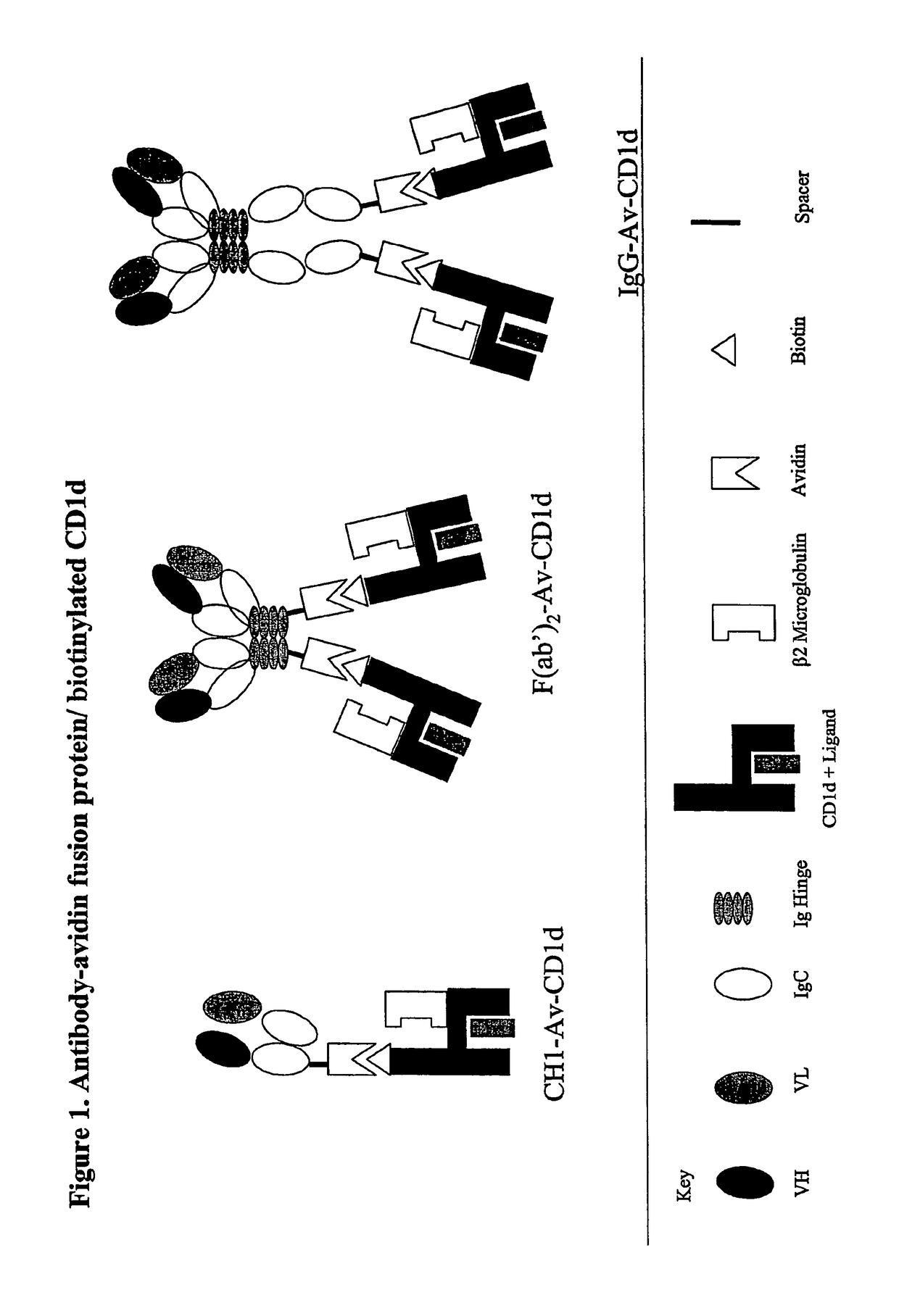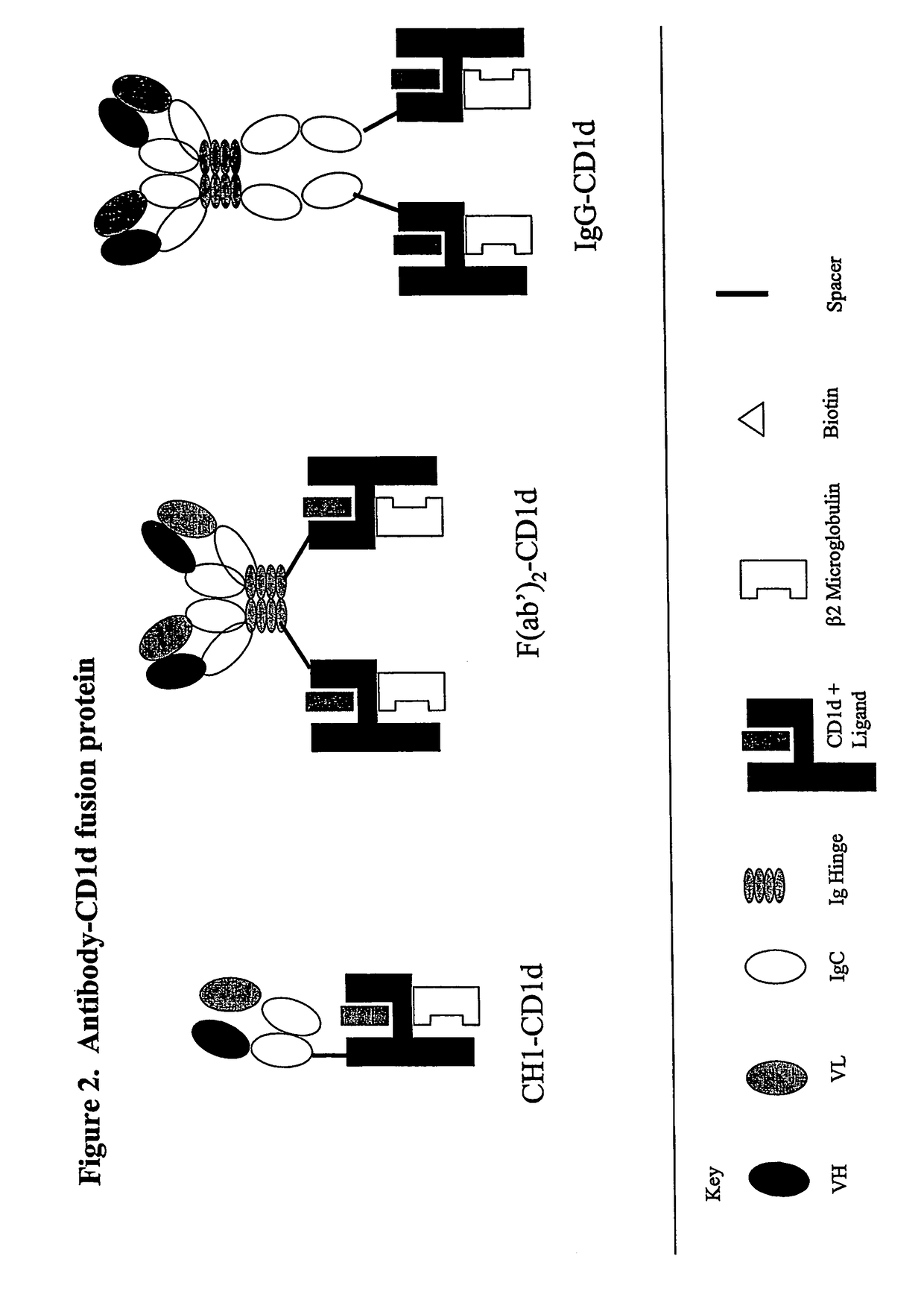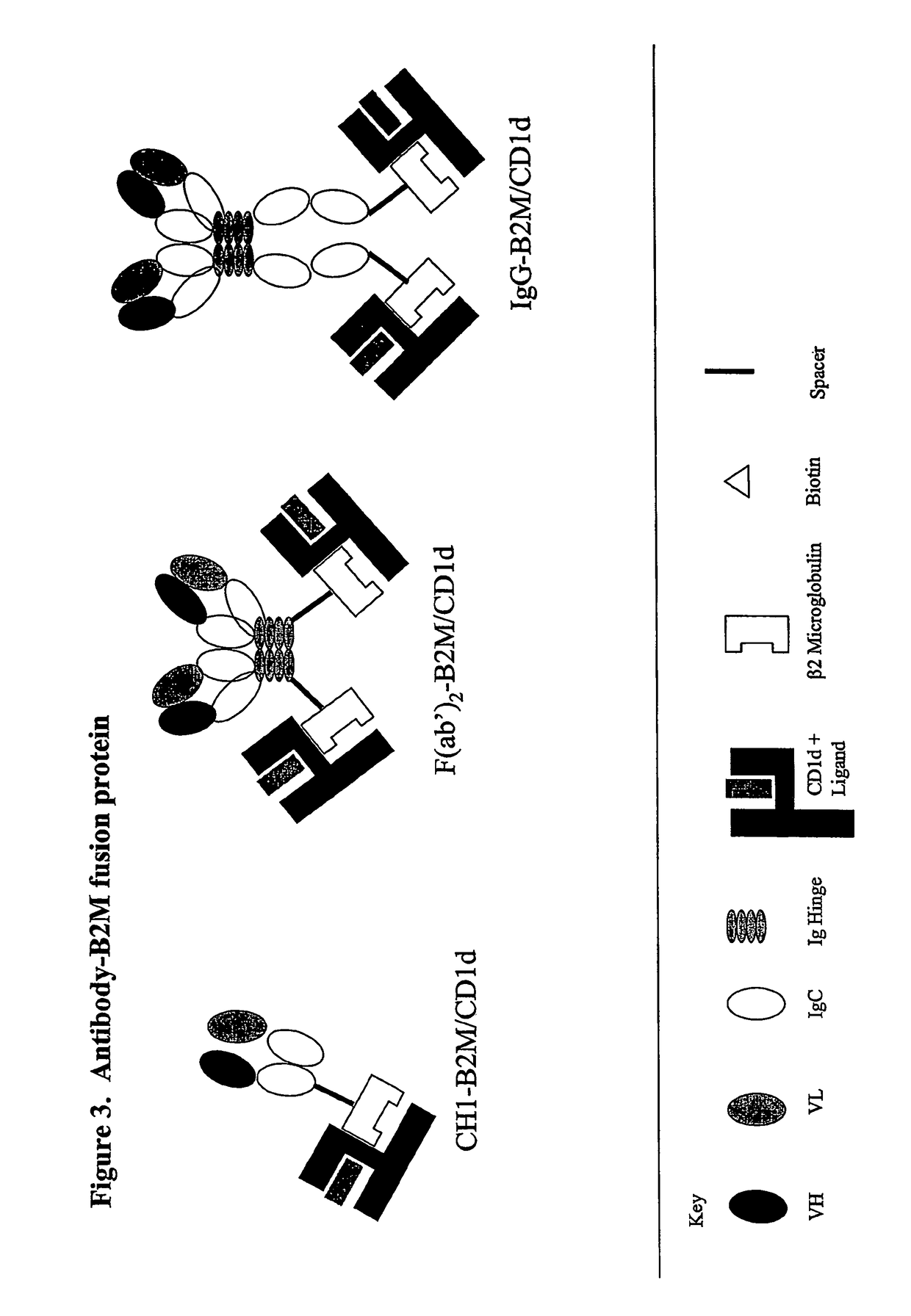Targeted CD1d molecules
a cd1d and target technology, applied in the field of immunology, can solve the problems of systemic activation of cd1d-nkt and undesirable results
- Summary
- Abstract
- Description
- Claims
- Application Information
AI Technical Summary
Benefits of technology
Problems solved by technology
Method used
Image
Examples
example 1
Anti-Tumor Antibody-MIC-A or B or ULBP Conjugates or Fusion Proteins
[0197]Targeting a high density of MHC class I-related molecule such as MIC-A or -B, ULBP or CD1d on the surface of tumor cells will activate different effector cells such as NK, NKT, or T cells and induce them to kill target tumor cells.
[0198]It has previously been shown experimentally and clinically that radiolabeled or fluorescent labeled mAbs directed against TAA can be specifically targeted in vivo on tumor cells (Delaloye et al., J. Clin. Invest. 77:301 (1986); and Folli et al., Proc. Natl. Acad. Sci. USA 89:7973 (1992)). Thus our general strategy will be to couple monomorphic MHC class I-related proteins to anti-TAA mAbs or fragments of mAbs in order to target them on tumor cells. The interest of the proposed strategy is that it will take advantage of both the efficient targeting properties of high affinity anti-TAA mAbs and the powerful and rapid activation of effector cells known to play an essential role in...
example 2
Anti-Tumor Antibody CD1d Conjugates or Fusion Proteins
[0214]a) Chemical coupling. Recombinant soluble human CD1d are produced in eukaryotic cells with a mutation at the C-terminus introducing a single cysteine residue. After derivation of the free cysteine with an excess of bis-maleimide and elimination of the excess of free bis-maleimide, the maleimide derivatized CD1d is coupled to the free SH group of eysteines from an Fab′ fragment of a high affinity anti-TAA mAb, as described previously (Robert et al., Cancer Immunity (2001)).
[0215]b) Fusion protein. The cDNA of soluble CD1d protein is fused to the sequences encoding scFv or Fab fragment from a high affinity anti-TAA mAb. Two types of fusions will be made so that either the CD-1d will be expressed at the N-terminus, followed by the antibody fragment or the opposite. In both cases, a semi-rigid amino-acid spacer sequence is placed between the antibody fragment and the CD1d molecule to avoid steric hindrance. The most active form...
example 3
Anti-Neoangiogenesis Antibody-MHC Class I Related Conjugates or Fusion Proteins
[0219]It is now broadly accepted that neoangiogenesis represents an essential condition for tumor development and growth. Thus, one application of our strategy consists in antibody targeting of monomorphic MHC class I related protein such as MIC-A / B, ULCBPs or CD1d molecules in the neovessels. The presence of monomorphic MHC class I related molecules in the neovessels will focus NK and NKT cells activity in the tumor area. The activation of NK and NKT cells in the tumor neovessels have three beneficial effects: 1) It increases inflammation in the tumor area and enhances anti-tumor immune response by recruitment of antigen presenting cells and T lymphocytes through local secretion of cytokines and interleukins; 2) It has a direct cytotoxic effect against endothelial cells from tumor neovessels and thus decreases blood flow in the tumor and 3) The increased secretion of TNF and other cytokines by macrophage...
PUM
| Property | Measurement | Unit |
|---|---|---|
| concentration | aaaaa | aaaaa |
| concentration | aaaaa | aaaaa |
| pH | aaaaa | aaaaa |
Abstract
Description
Claims
Application Information
 Login to View More
Login to View More - R&D
- Intellectual Property
- Life Sciences
- Materials
- Tech Scout
- Unparalleled Data Quality
- Higher Quality Content
- 60% Fewer Hallucinations
Browse by: Latest US Patents, China's latest patents, Technical Efficacy Thesaurus, Application Domain, Technology Topic, Popular Technical Reports.
© 2025 PatSnap. All rights reserved.Legal|Privacy policy|Modern Slavery Act Transparency Statement|Sitemap|About US| Contact US: help@patsnap.com



